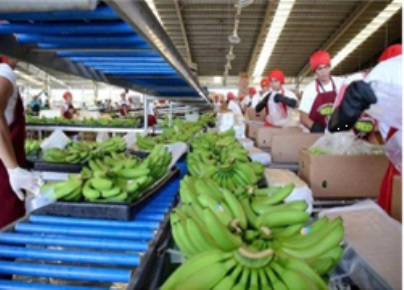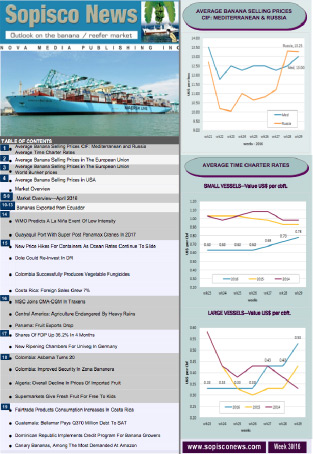Philippines Bananas Losing Global Market Share
2023-11-03

One of the things that make a country memorable to tourists and foreign business people is its produce, including local fruits. The homegrown fruits and other food items leave an indelible mark on those who visit the Philippines or have sampled our products at foreign trade fairs. The Japanese, for one, are fond of Philippine Cavendish bananas and pineapples and import these fruits regularly.
Sembikiya Fruit Co. Ltd., one of the oldest fruit shops in Japan, said its customers prefer bananas and pineapples from the Philippines. (See, 'Exec: Logistics woes crimp banana shipments to Japan,' in the BusinessMirror, October 24, 2023). According to the president of Sembikiya, Philippine pineapples are well-received in Japan due to their sweetness and rich aroma. The Japanese also prefer Philippine bananas over those produced in other countries due to their rich flavour.
However, these attributes are not enough to guarantee that local producers will get a more significant share of the fruit market in Japan and other countries. While Cavendish bananas and pineapples produced locally are considered top-notch and incomparable, the Philippines is losing market share to other competitors, such as Ecuador. More bananas from the Latin American country are entering Japan because logistics woes have made it difficult for Philippine exporters to deliver their commitments to foreign customers.
Problems related to logistics have been added to the list of hurdles confronting local banana growers who have been grappling with the spike in production cost and the spread of Fusarium wilt or Panama disease in their plantations. The lethal fungal disease, for one, has reduced banana output and made it more challenging for exporters to supply the volume required by foreign buyers. Compounding the problems for banana producers is the conflict in Eastern Europe, which caused inputs like fertilizer to become more expensive.
The country's banana exports plunged to a six-year low last year, according to data from the Philippine Statistics Authority (PSA). PSA figures indicated that the Philippines exported 2.273 million metrics (MMT) of bananas in 2022, or 6.5 per cent lower than the previous year's 2.432 MMT. Because of the decline in shipments, the country's dollar earnings from bananas fell by 3.66 per cent to $1.096 billion in 2022 from $1.138 billion in 2021. (See, 'PHL bananas still sagging on high costs, pests,' in the BusinessMirror, February 23, 2023).
The Food and Agriculture Organization of the United Nations noted that banana production in the Philippines continued to fall as growers struggled to address and curb the devastating spread of Banana Fusarium Wilt Tropical Race 4 disease. The Pilipino Banana Growers and Exporters Association estimated that the total hectarage affected by Fusarium wilt is between 15,000 and 36,000 hectares. The area would represent about 17 to 40 per cent of the 88,000 hectares planted with bananas nationwide.
Guatemala, a country with a long history of political instability, overtook the Philippines and became the world's second-largest exporter of bananas last year. Local banana growers have set their sights on reclaiming the title from their Guatemalan counterparts this year. However, our banana producers need help to do it; they need the Government's support in removing the barriers that made it difficult for them to meet the volume required by buyers to improve their export receipts.









